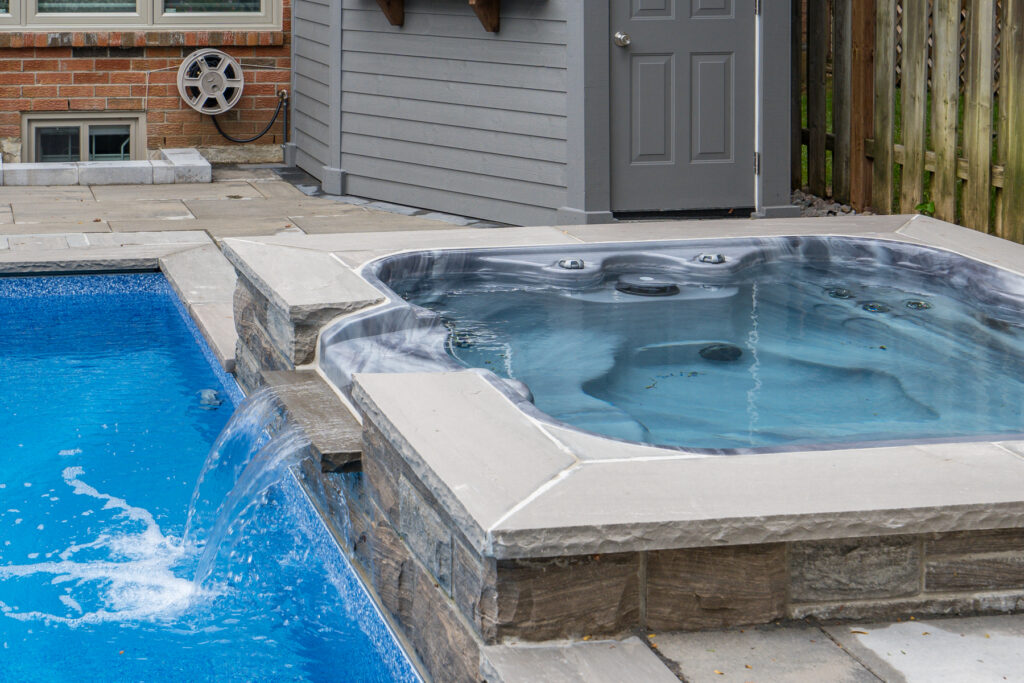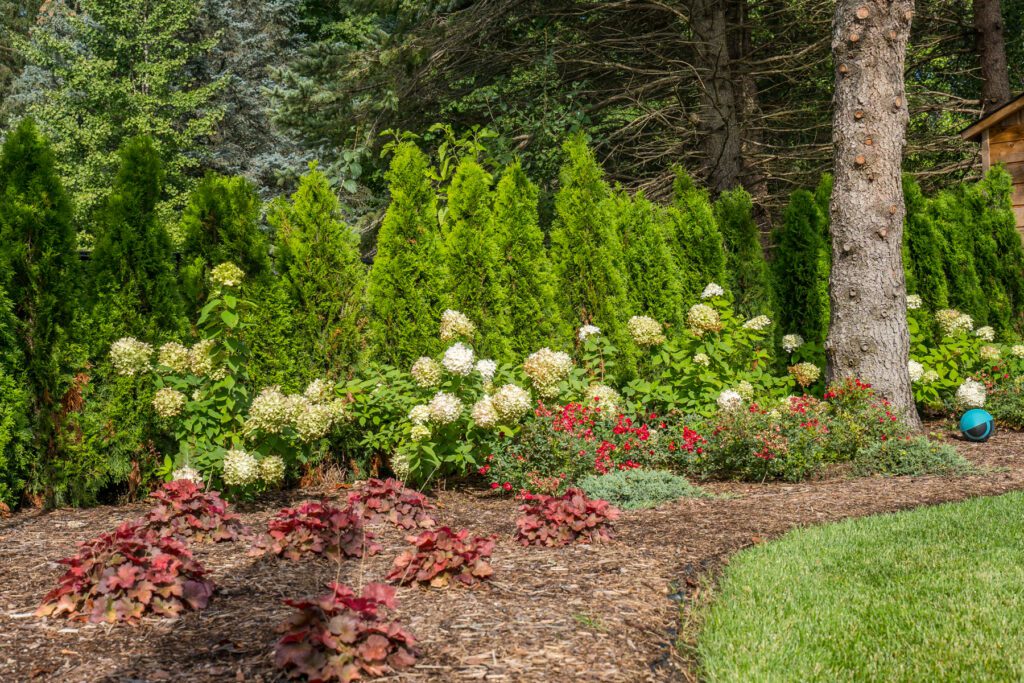Your Guide to Enhancing Outdoor Spaces with Hardscaping and Landscape Maintenance
Creating a stunning outdoor space involves more than just planting flowers and mowing the lawn. It requires thoughtful design, careful implementation, and regular maintenance. This guide looks at hardscaping and landscape maintenance. It offers useful tips to help you change your outdoor space into a beautiful and functional oasis.
Understanding Hardscaping
Hardscaping is a crucial aspect of landscape design that often goes overlooked. It uses non-living materials like stone, concrete, wood, and metal. These materials help create useful and attractive features in your outdoor space.
Hardscaping can greatly improve the appearance and use of your garden. It includes patios, walkways, retaining walls, and water features.
Benefits of well-designed hardscaping:
- A well-designed hardscape can raise your property’s value and improve its curb appeal. It helps your home stand out in the neighborhood.
- Creates useful outdoor living spaces: Patios, decks, and outdoor kitchens expand your home. They offer areas for relaxation and fun.
- Reduces water usage and maintenance needs: Hardscaped areas require less watering and upkeep compared to lawns and planted areas.
- Prevents soil erosion: Retaining walls and terraces can help manage sloped landscapes and prevent soil loss.
- Provides year-round interest: Unlike plants that may die back in some seasons, hardscape elements look good all year.
Key Elements of Hardscaping Design
Consider these essential elements when planning your hardscape:
- Scale and proportion: Your hardscape features should complement your home and the surrounding landscape. A massive patio might overwhelm a small backyard, while a tiny walkway could look out of place in a large garden.
- Choice of materials: The materials you select greatly influence the look and feel of your outdoor space. Natural stone can create a rustic, timeless look, while sleek concrete might give a more modern vibe.
- Functionality: Every hardscape element should serve a purpose. A patio offers a place for outdoor dining. A retaining wall can make a sloped yard more usable. A good walkway improves access to different areas.
- Color and texture: Use a mix of colors and textures to create visual interest. For example, combine smooth river rocks with rough-cut flagstone, or mix warm-toned bricks with cool gray concrete.
- Integration with softscape: Your hardscape should complement, not overpower, your plants and lawn. Plan for planting areas within and around your hardscape to soften edges and create a harmonious blend.
Hardscaping Services
Professional hardscaping services can bring your outdoor vision to life. Common hardscaping services include:
- Patio Design
- Deck construction
- Interlocking Steps
- Driveway Paving
- Retaining wall construction
- Outdoor kitchen design
- Fire pit and fireplace construction
- Water feature installation
- Above ground pool integration
- Heated Driveway Installation
Selecting and Maintaining Hardscape Materials
Choosing the right materials for your hardscape is crucial for both aesthetics and longevity. Consider these factors:
- Durability: How well will the material withstand your local climate and intended use?
- Maintenance requirements: Some materials require more upkeep than others. For example, wood decking may need regular staining, while concrete pavers might only need occasional cleaning.
- Safety: For areas like pool decks, choose materials with good traction when wet.
- Sustainability: Consider using locally sourced or recycled materials to reduce environmental impact.
- Cost: Balance your budget with your desired look and durability needs. Sometimes investing in higher-quality materials upfront can save money on maintenance and replacements in the long run.
Once your hardscape is installed, regular maintenance is key to keeping it looking its best:
- Sealing: Many stone and concrete surfaces benefit from periodic sealing to prevent staining and water damage. The material and usage determine the frequency, but experts typically recommend every 1-3 years.
- Cleaning: Regular sweeping and occasional power washing can keep your hardscape looking fresh. For stubborn stains, use cleaners specifically designed for your hardscape material.
- Weed control: Stay on top of weeds growing between pavers or in cracks. Consider using polymeric sand in joints to inhibit weed growth.
- Repairs: Address any cracks, chips, or loose elements promptly to prevent further damage. Small issues can often be DIY fixes, but larger problems may require professional attention.
- Wood care: Wooden elements may need regular staining or sealing to protect them from the elements. Inspect annually for signs of rot or insect damage.

Low Maintenance Landscaping
While a lush, green lawn can be beautiful, it often requires significant time and resources to maintain. Low maintenance landscaping offers an attractive alternative, allowing you to enjoy a beautiful outdoor space with less work. Here are some key strategies for creating a low maintenance landscape:
- Choose native plants. Native plants fit well with your local climate and soil. They need less water, fertilizer, and pest control.
- Implement xeriscaping: This landscaping method reduces or eliminates the need for supplemental water from irrigation. People find it especially helpful in areas with droughts. However, they can use it anywhere to create a water-saving landscape.
- Use groundcovers: Replace high-maintenance grass with low-growing groundcovers. Options like creeping thyme, sedum, or clover can provide green coverage with minimal care.
- Install hardscaping: Incorporate more hardscaped areas like patios, decks, or gravel paths. These require little maintenance beyond occasional cleaning and can reduce the amount of plantings you need to care for.
- Mulch generously: A thick layer of mulch helps retain soil moisture, suppress weeds, and moderate soil temperature.
- Choose perennials over annuals: Perennial plants return year after year, reducing the need for frequent replanting. Many perennials are also drought-tolerant once established.
- Add ornamental grasses to your garden. Many of these grasses are easy to care for and can survive with little water. They also offer beauty throughout the year with their changing colors and textures.
- Use raised beds: Raised beds can improve drainage, reduce weeds, and make gardening tasks easier on your back. They’re great for vegetable gardens or flower beds.
- Install a drip irrigation system. It may cost money at first, but it can save water and time later. This system delivers water straight to plant roots.
- Create defined edges: Install edging between lawn areas and garden beds or hardscaping. This gives a neat appearance and makes it easier to maintain. It stops grass from invading gardens and gravel from spilling onto lawns.

Low Maintenance Plant Suggestions
Consider these low maintenance plants for your landscape:
- Trees: Crape Myrtle, Japanese Maple, Serviceberry
- Shrubs: Boxwood, Hydrangea, Barberry
- Perennials: Black-Eyed Susan, Coneflower, Daylily
- Groundcovers: Creeping Phlox, Mondo Grass, Stonecrop
- Ornamental Grasses: Feather Reed Grass, Blue Fescue, Fountain Grass
Seasonal Care for Low Maintenance Landscapes
Even low maintenance landscapes require some care. Here’s a seasonal guide:
Spring:
- Prune summer-blooming shrubs before new growth begins
- Apply a fresh layer of mulch to garden beds
- Start up your irrigation system if you have one
Summer:
- Water deeply but infrequently, focusing on new plantings
- Remove spent blooms from flowering plants to encourage more blooms
- Monitor for pest issues and address them promptly
Fall:
- Plant new trees, shrubs, and spring-blooming bulbs
- Reduce watering as temperatures cool
- Leave ornamental grasses and seed heads for winter interest and bird food
Winter:
- Prune deciduous trees and shrubs while they’re dormant
- Plan for any landscape changes you want to make in spring
- Minimize foot traffic on frozen ground to prevent damage to plants
Choosing Professional Services
While DIY landscaping can be rewarding, professional services offer expertise, save time, and often provide superior results. When choosing a landscaping company, consider these factors:
- Reputation: Check online reviews and ask for references to gauge their reliability and quality of work.
- Licensing and insurance: Ensure the company is properly licensed and insured to protect you from liability.
- Experience and expertise: Look for a company with a proven track record in both hardscaping and landscaping.
- Range of services: Choose a company that can meet all your outdoor space needs, from design to ongoing maintenance.
- Communication style: Select a company that listens to your ideas and communicates clearly throughout the project.
- Sustainability practices: If environmental concerns are important to you, look for a company that uses sustainable practices and materials.

Transform Your Outdoor Space
Ready to elevate your project with expert construction services? Contact us today to schedule a complimentary on-site consultation. Reach out at +1 905 72 63 336 or email us at [email protected].

